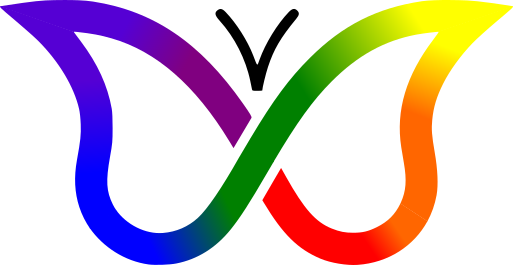ADHD (attention deficit hyperactivity disorder) symbols like the ADHD butterfly are great tools for raising awareness and showing support for neurodiversity especially around ADHD awareness month. With the right ADHD images and icons, you can easily create visual content and designs to educate people about ADHD, represent the ADHD community, and promote acceptance.

This article will explore the different types of ADHD symbols and images you can use, where to find royalty-free options, how to use them effectively in your ADHD advocacy, and more. Read on to learn why ADHD symbols matter and how to harness their power!
Why Are ADHD Symbols and Images Important?
Visuals like ADHD symbols make complex topics more accessible. They quickly convey key information and emotion that can be hard to get across in words alone.
ADHD images and icons help:
- Raise awareness – Catch people’s attention and introduce the psychology of ADHD in a simple, memorable way.
- Educate – Illustrate ADHD traits and struggles so others better understand.
- Advocate – Represent the ADHD community and promote acceptance of neurodiversity.
- Connect – Help people with ADHD feel seen, empowered, and less alone.
- Communicate – Share your ADHD pride and struggles without having to explain.
- Fundraise – Use ADHD symbols on merchandise to raise funds for ADHD causes.
- Celebrate – Highlight ADHD strengths and accomplishments.
With the rising neurodiversity movement, it’s important we have visual content to normalize ADHD, autism, and other neurological differences. ADHD symbols are a key part of that advocacy.
10 Types of ADHD Symbols and Images to Use
There are many great ADHD symbols and images to choose from. Here are 10 popular kinds and how to use them:
1. The ADHD Butterfly

The ADHD butterfly is arguably the most recognizable ADHD symbol. This vibrant rainbow butterfly represents the constant activity and energy of ADHD minds.
Use it to grab interest and instantly signal you’re discussing ADHD. Looks great on t-shirts, cards, posters, etc.
2. Ribbons
ADHD ribbon images come in various colors and designs. They raise awareness of ADHD like other medical condition ribbons.
Feature ADHD ribbons prominently on flyers, cards, announcements, etc. Pair with ADHD facts and resources.
3. Puzzles
Puzzles represent the complex wiring and challenges of ADHD brains. Use in contexts related to ADHD research, diagnosis, and treatment.
4. Fidget Items
Fidget toys and objects embody the ADHD need for constant stimulation. Use when discussing ADHD fidgeting or alongside ADHD coping tips.
5. Brains
ADHD brain images contrast neurotypical and ADHD brains. The ADHD brain looks disorganized with scattered connections illustrating impaired executive functioning. Use when explaining ADHD brain biology and neurodiversity.
6. Words Like “Distracted”
Words that describe ADHD traits make simple, literal symbols. “Distracted”, “Restless”, “Hyperfocus” etc visually communicate the ADHD experience. Nice on posters and social posts.
7. Children
Children are a classic symbol of ADHD and other childhood conditions. Use selective child images with sensitivity though, as ADHD persists into adulthood.
8. Checklists
Checklists represent ADHD struggles with organization, memory, and task focus. Incorporate near content about ADHD symptoms, coaching, and skills.
9. Message Bubbles
Speech bubbles make lighthearted ADHD icons. Insert common ADHD thoughts like “Squirrel!” when distracted or “I’m late again!” for time blindness.
10. Emotive Symbols
Emotive symbols like lightbulbs, arrows, clouds, etc. can represent ADHD thoughts and feelings. Gets concepts like ADHD motivation and anxiety across quickly.
Where to Find Royalty-Free ADHD Images
To use ADHD symbols legally, be sure you have the rights or license. Here are some top sources for royalty-free and public domain ADHD images you can use without attribution:
- Public awareness sites like CHADD often offer free downloadable ADHD graphics.
- Stick to government sites like the NIH, CDC, and mental health orgs for official public domain images.
- Creative Commons licensed images on Flickr let you modify and share with attribution.
- Pixabay, Pexels, and Unsplash have large pools of CC0 ADHD images.
- Vectors like ADHD ribbons and icons are safest bet on 123RF and iStock.
- Hire ADHD artists on Etsy to create custom vector graphics so you own rights.
Just be sure to credit properly and double check licenses. Avoid images with unclear source or usage rights.
10 Tips for Using ADHD Symbols Effectively
Once you have ADHD images to use, how do you actually implement them? Here are 10 tips:
1. Put the most important ADHD content near the symbol.
Make sure the symbol is supporting your core message, stat, or call to action.
2. Use symbols consistently and repetitively.
Using the same ADHD symbols over and over will make them recognizable.
3. Label obscure symbols if needed.
For less universal symbols like puzzles, consider adding a label like “ADHD Mind” so the meaning is clear.
4. Pair with other visuals like photos for balance.
Don’t use too many symbols. Combine with human images so content feels relatable.
5. Size for visibility.
Make symbols prominent and easy to see at a glance.
6. Keep symbols on-brand for your cause.
Match color scheme, style, and tone to other awareness content.
7. Get feedback from the ADHD community.
Ask for input to be sure imagery feels empowering and genuine.
8. Use inclusive symbols that represent the diversity of ADHD.
Such as girls, teens, adults, different races, LGBTQ community, etc.
9. Avoid potentially offensive tropes like “airhead”.
Stick to positive, accurate symbols that celebrate ADHD strengths.
10. Update symbols over time as views evolve.
What represented ADHD well 10 years ago may not resonate today. Refresh your iconography.
Examples of ADHD Symbols Used Effectively
To see ADHD symbols in action, here are examples of them used effectively in awareness and advocacy content:
ADHD Butterfly on a T-Shirt
The colorful ADHD butterfly pops on this shirt, instantly signaling ADHD pride. Wearing ADHD symbols proudly helps reduce stigma.
ADHD Ribbon on a Flyer
This event flyer includes facts about ADHD paired with a bold ADHD ribbon graphic. It quickly communicates the event’s ADHD focus.
Speech Bubble Stickers
These silly emoji speech bubble stickers humorously communicate common ADHD thoughts and behaviors. They make ADHD quirks seem more relatable.
ADHD Brain Infographic
This infographic uses brain graphics to effectively explain key ADHD brain biology differences and their impacts on symptoms.
ADHD Puzzle Piece Poster
This poster campaign decorates public spaces with eye-catching puzzle piece imagery paired with an ADHD statistic and the organization’s name.
Distracted Word Art
This social media post uses scattered “Distracted” text art to capture viewers’ attention and creatively convey ADHD distraction struggles.
The examples above show how ADHD symbols can spice up standard awareness content and make it more engaging.
Key Takeaways on Using ADHD Symbols
- ADHD symbols like the ADHD butterfly help raise awareness and advocate for neurodiversity through simple, visual communication.
- Various ADHD images like ribbons, brains, fidgets, words, and kids can symbolize different ADHD topics and perspectives.
- Use royalty-free ADHD graphics from reputable public health sources, CC0 creative sites, and ADHD artists.
- Make sure symbols reinforce your main points and display prominently. Use thoughtfully to celebrate ADHD strengths without tropes.
- Test with your audience and refresh symbols over time to stay relevant.
What ADHD symbols resonate most with you? Look for opportunities to incorporate visuals to strengthen your advocacy content and connect with the ADHD community. With the right awareness symbols and images, we can build understanding and acceptance for neurodiversity.











